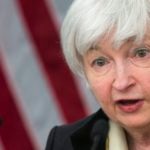The Fed's search for rate hike support has come up short
Fed members just can’t seem to make up their mind these days. One minute they are shouting out encouraging signals about the U.S. economy, and the next it is all gloom and doom. In the end, we are left with a mixed signal as to what is really going on, with the impression that Fed members themselves don’t really have any idea on how to proceed in such an uncertain economic environment.

Once again, the Fed has let a range of excuses stand in the way of making forward progress in their strategy toward policy normalization. The looming Brexit vote was a factor in their decision to not raise rates at the June meeting. The decision is extremely important for the UK and for Europe and could have significant ramifications for the global economy and global financial markets. This could then translate into consequences for the U.S. economic outlook that would be factored into future policy decisions. Brexit is just one of many potential global risks that are bound to pop up in future Fed communication.
June’s statement wasn’t necessarily more dovish, and the famous dot plot of FOMC member rate hike projections confirmed the policy path set back in March of two increases in 2016 and four in 2017. However, Chair Janet Yellen’s press conference carried a much more worried tone, pointing to lingering structural concerns and a possible slowdown in momentum for the U.S. economy, influenced in large part by the sharp decline in job growth in May.
The reference to structural factors is surprising since these developments – slower productivity growth, demographic changes and increased global interconnectivity – have been apparent for several years. With this in mind, it seems the Fed has delayed recognizing the obvious and has neglected to be proactive in adjusting their projections. Meanwhile, concerns on slowing momentum in the economy hints that some Fed officials may fear that we are in the late stages of the business cycle. If that is the case, we should forget about any rate increases in the foreseeable future, and head back toward additional rounds of quantitative easing while officials brush up on the implications of negative interest rates.
"The challenge for Fed-watchers is that signaling from the Fed is liable to change at the drop of a dime depending on incoming economic news, raising the question of what is truly the basis of FOMC decisions.
Ultimately, this leaves the door open for a shift in expectations if the data do not recover in the coming months. Although July remains a live meeting, the chances are low that incoming data will be strong enough to reverse this cautious sentiment. Furthermore, with the presidential election on the horizon, there will likely be additional volatility that would deter the Fed from pushing ahead with more than one rate increase this year. In turn, this implies a slower pace of rate increases after 2016, given that committee members are “quite uncertain” on where rates will end up in the long run.
The challenge for Fed-watchers is that signaling from the Fed is liable to change at the drop of a dime depending on incoming economic news, raising the question of what is truly the basis of FOMC decisions. Now, it seems that the all-powerful data-dependent strategy is backfiring as the Fed fights to hang on to their dual mandate.
Kim Chase is a senior economist with BBVA Compass Economic Research. Any statement or opinion of a BBVA Compass economist is that economist's own statement or opinion and does not represent a statement or prediction by BBVA Compass, its parent companies or management.